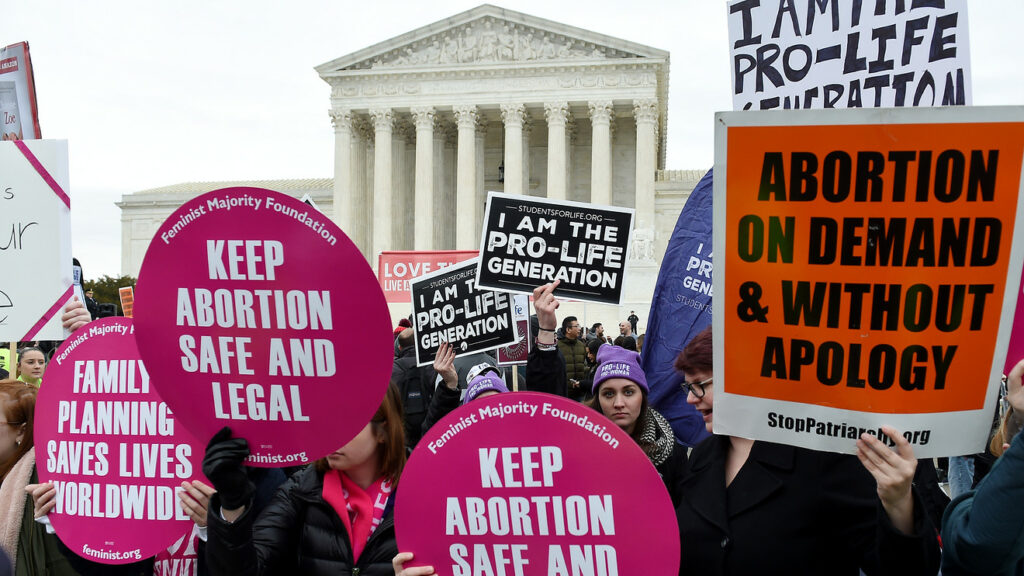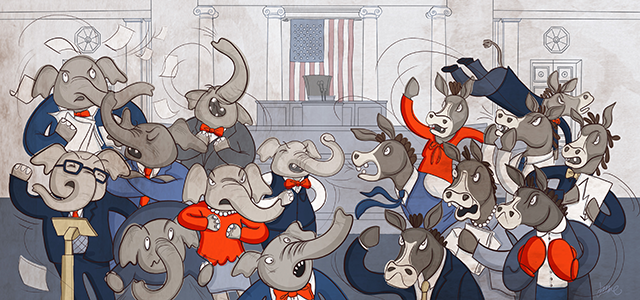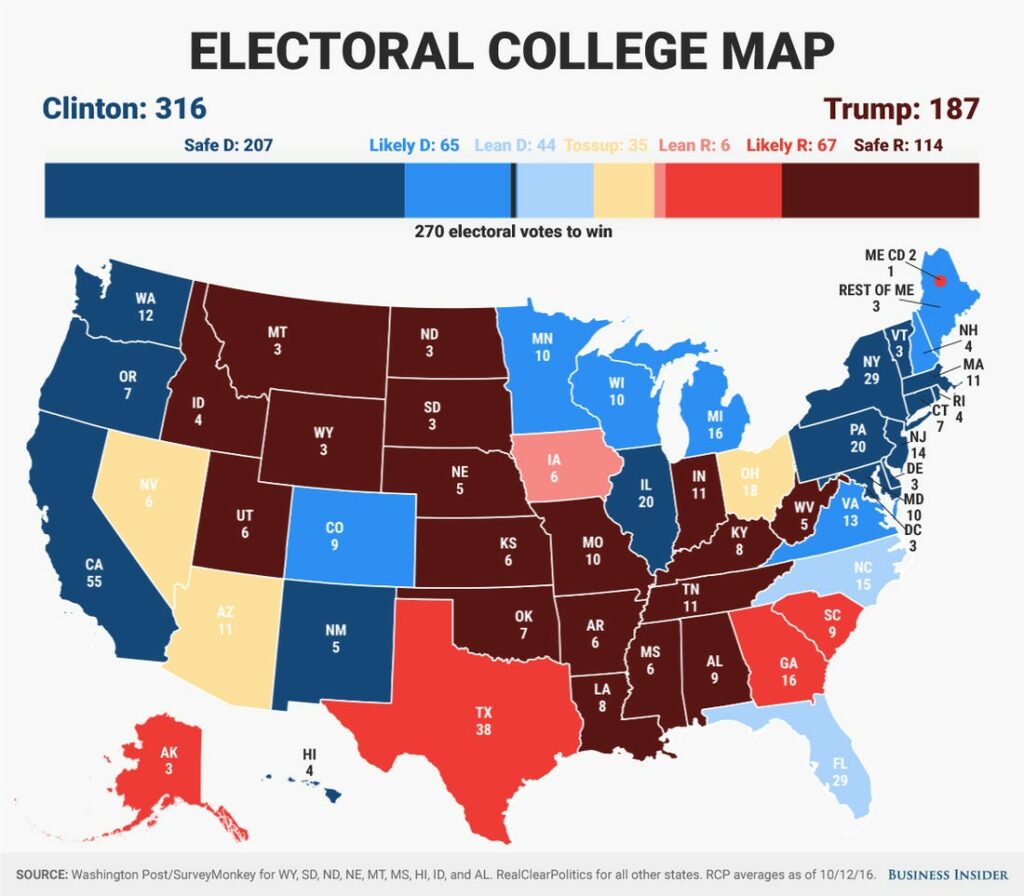By Devi Jadeja,
Political systems from across the world seem to be at a time of upheaval, it is almost as though one can feel the tangible shift in the global order. In the United States specifically, major political polarization has severely divided the country, making it much harder to pass meaningful legislation, and more difficult to find consensus not only amongst politicians, but amongst our neighbors, and in our communities. Potentially voting in a new President this November will not alter the deep partisan divide that the United States is facing.
It wasn’t always this way. While United States has had two main political parties almost since its inception (despite the wishes of its founders), these main political parties have been formed of loose coalitions of local and state parties. The parties’ ideas were less unified; differences between groups and individuals allowed for more conversation across party lines. Within each party there were what loosely can be called Conservative Democrats, or Liberal Republicans. Things were “less set”. To be a member of either party did not necessarily mean you needed to agree on a list of specific key issues. In the 2000s, things began to change. Politics became nationalized. Platforms were standardized. Identity, religion, and culture became a defining feature of the national parties. Technology and the internet made this phenomenon even more potent.

The Founders of the United States intended for the government to be split into three equally powerful branches, the legislative branch, made up of the Senate and Congress; the executive branch, which includes the President, Vice-President and their cabinet; and the judicial branch, composed of the Supreme Court and other federal courts. The consequences of a two-party system that America is faced with today leads to legislative gridlock, which in turn leads to a greater use of executive authority by the President, to keep things moving and get things done, providing an ever more important role for the judiciary. The state of affairs does not in practice allow for the checks and balances system of the three branches as outlined in the U.S. Constitution. The imbalance in this system increases the partisan divide, heightening the probability of one’s own political party winning the elections in order to gain control over the executive branch and in appointing judicial nominees. Thus, partisanship has high chance in increasing all around.
This is not how the United States was designed to function, and this system of running things may prove unsustainable. It divides rather than unites, and leads to gridlock. Plenty of ideas exist on ways to fix this dilemma, including eliminating the Electoral College. The Electoral College, written as a mechanism into the U.S. Constitution, is a body of electors from each state that indirectly elects the President of the United States every four years. Each state has a board of members equal to their members of Congress. In a system referred to as “winner takes all”, whoever wins the popular vote in each state wins all of the state’s electoral votes. In theory, this makes a lot of sense, but in practice, it means that if one candidate wins by only one hundred more votes, they get all of the states electoral votes. In States that are considered solidly “red” or “blue”, this means that voters from the opposition may feel that their votes do not count. However, if the Electoral College was abolished, popular vote would decide the presidential election. An amendment would also need to be made to the Constitution, for this to change. States could get around this, by ensuring that whoever wins the popular vote in their territory will be given their electoral votes. However, this idea is unlikely to take place, given that it would most likely benefit the Democrats in winning presidential elections. Politicians could also be put under pressure to behave more ethically, and to reach for greater cooperation across the aisle rather than a stalemate. It may be the case that a much bigger political shift is necessary.
A multi-party political system may be the solution to the United States problems. It would break apart the grip that the two parties have over the American people, decrease polarisation, hand power back to voters, lead to broader policies -more consensus and coalition-building in Congress- and could help re-balance power between the legislative, executive and judicial branches of government. Constitutionally, this is entirely possible. There is no limit listed in the Constitution on how many political parties can operate in the United States. Certainly, there are more party groups within the country but they cannot hope to compete in most elections based upon the “winner takes all” system that the U.S. operates upon. Moving to a multi-party political system in the United States would mean changing the way that America’s government representatives are elected, from a system where only the person with the most votes wins to a system of proportional representation. This could mean that the top three people, or five people, would “win” an election. Democrat U.S. Representative for Virginia’s 8th congressional district, Don Beyer, has already introduced an act to implement this system, called the Fair Representation Act. This system would combine several congressional districts into larger ones, get rid of primaries for congressional districts, and instead utilise one election where the top five candidates from a district would represent constituents in Washington. Lee Drutman, author of Breaking the Two-Party Doom Loop: The Case for Multiparty Democracy in America, advocates a similar approach in the Senate, dropping the primary and instead having one election with ranked-choice voting to elect Senators.
This kind of structure would make room for other existing parties, or brand new parties to gain a seat at the table. It may also lead to ruptures within the Democrat and Republican parties. Amongst themselves, they have seen polarization and a divide between moderate and more progressive or conservative policies. Should this kind of system ever be put into place, it could have a huge impact on the political process in the U.S., making it harder for certain individuals, or two groups, to monopolize national discussion and policy. Politicians would need to place much greater emphasis on collaboration between parties to get things done. Implementing this kind of change would be a huge undertaking, but one that is necessary. It is not the American people who need to be convinced about the benefits of a multi-party system, it’s those currently in power that will struggle most with the transition. The current state of democracy in the U.S. is precarious. The country is not currently operating in the way that its founders had hoped, and some kind of shift is needed. A proportional system of representation with several political parties adheres to the Constitution while also encouraging more choice, more freedom, and the possibility of a stronger union.
References
- Foreign Policy, Let a Thousand Parties Bloom. Available here.
- The Atlantic, The Two-Party System Broke the Constitution. Available here.

Devi is enjoying life in Austin, Texas. She recently graduated from SciencesPo, Paris with a Master in Human Rights and Humanitarian Action. She has a keen interest in transatlantic affairs, women's rights, and U.S. politics. She speaks English, French, and loves reading, traveling, and spending time outdoors.





